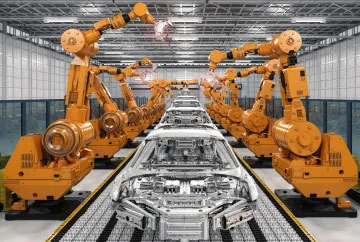Supply Chain (SC) Disruptions continue to affect business resilience, compromising their speed, responsiveness, and agility in delivering their promise to their customers and society.
Over the last few years, despite a 50% reduction in the number of supply chain disruptions, each organization still loses an average of $82mn due to such disruptions1
- By 2026, 95% of companies will have failed to enable end-to-end resiliency in their supply chains. 2
- A 5% reduction in supply chain costs can double net profits for organizations. 3
- Businesses with optimized supply chains have 15% lower supply chain costs, less than 50% of inventory holdings, and 3X faster cash-to-cash cycles. 4
Lack of adequate and precise inventory visibility is one of the leading causes of SC disruptions. A Deloitte report reveals that just 13% of companies can map their entire supply chain, with 22% having no visibility beyond immediate suppliers. Moreover, only 13% of companies have adequate visibility into their inventories, which causes production delays and affects customer dissatisfaction.5
A closer look at the ground reality shows that manufacturing supply chain requires upstream and midstream visibility to ensure the disruptions have little to no effect on the plant throughput and OEE. While this may seem to be an uphill climb, this is now fathomable with a trifecta of approaches.
- Understanding the Key KPIs with a solid Domain catalog
- Putting powerful data models and predictive AI engines to use and
- Crafting a plug and play composable architecture that can be amalgamated with customer existing technology investments including legacy inheritance
What Causes Limited Inventory Visibility?
Most organizations operate with legacy inventory tracking platforms today, which are essentially static repositories containing primitive data about inventories. Moreover, 75% leverage multiple inventory management systems, exacerbating reconciliation issues while amplifying operational inefficiencies.6
While inventory visibility solutions are on offer in the market, these tend to focus on downstream visibility with goals like time to market and order fulfillment KPIs. However, solutions offering upstream visibility, i.e., visibility into the inventories and risks of Tier 1, 2, and 3 suppliers, are few.
A closer look at the needs of key supply chain stakeholders provides a detailed picture of why comprehensive inventory visibility is essential to orchestrate SCs today efficiently. For instance,

Moreover, upstream and midstream inventory visibility is also critical for Supply Chain Directors struggling with frequent stockout and overstocking scenarios. Similarly, Logistics Heads require data-driven planning and scheduling capabilities to deliver the right ETA to other SC stakeholders.
The need of the hour: Crossing the chasm with upstream and midstream visibility
Comprehensive upstream and midstream visibility is critical for nearly every SC stakeholder. In other words, manufacturers need insight into the inventories, not only within their organization but to cross over and have an integrated view of suppliers' inventory across multiple tiers, in-transit, and shop floor inventories as well. Supply Chain Visibility investments lead to a 30-50% reduction in machine downtime, a 10-30% increase in throughput, and an average 15-30% improvement in labor productivity.

Unfortunately, legacy solutions cannot help manufacturers attain this requisite insight into their global, distributed supply chains. But the vision of a connected supply chain with complete upstream visibility is now attainable with digital technologies like Artificial Intelligence (AI), Internet of Things (IoT), Generative AI, and modern software architectures all put together on a canvas that paints the picture addressing key business KPIs and not just technology imperatives.
Comprehensive inventory visibility can now be acquired with the power of AI.
AI will drive 360-degree inventory visibility.
Data from multiple sources would fuel a real-time inventory visibility solution. AI technologies will then process and analyze this data to generate and deliver actionable insights to various stakeholders. Here are a few ways in which innovations in digital technology are making it possible to achieve supply chain visibility:
- AI and Machine Learning: AI and ML algorithms can detect anomalous events in your supply chain processes and offer KPI-driven recommendations to various user personas for decision support.
- Internet of Things: IoT sensors make it possible to track the status and location of inventory in transit accurately. In addition, they also build visibility into your inventory levels within warehouses.
- Augmented and Virtual Reality: AR and VR technologies make packaging and transportation processes more efficient. They enable this by showing the exact location of items and empowering your cargo-loading processes.
- Cloud Inventory Management Systems: Data from CIMS systems of multiple suppliers can be integrated into your systems to achieve real-time visibility into their inventories and raw material stocks.
- Generative AI: Finally, GenAI can deliver insights to your users in natural language by analyzing supplier inventory statuses and translating anomalous events into warnings and alerts for your supply chain stakeholders.
Business benefits of supplier inventory visibility
Upstream and midstream supply chain visibility brings significant business impact for manufacturing organizations. Here are some of the key benefits that are enabled by comprehensive inventory visibility:

Final words
In addition to lowering the likelihood of disruptions, upstream visibility into the supply chain usually results from arresting the points of leakages early on and being able to explore alternatives with agility. This, coupled with the ability to understand and tie the data from various sources together making the model predictive and prescriptive, gives organizations the real power to make a difference. The next three to five years will usher in not only an increase in the adoption of digital supply chain technologies 7 but also new, more IT-focused roles that supply chain leaders will integrate.
As a result, manufacturers can expect a simultaneous positive impact on their top and bottom lines with comprehensive supply chain visibility.
Given that the technologies to gain this visibility are now readily available, manufacturers should strongly consider exploiting this opportunity. With well-architected solutions that allow OEMs to:
- Spot and understand supplier risks early on
- Enable real-time reconciliation of inventory data from diverse global warehouses,
- Integrate with supplier inventory management systems, and use AI to mine insights from this data, and
- Issue early warnings to OEMs to adjust schedules, in case of stock out scenarios to minimize disruption
Manufacturers are getting closer to their big vision of unwavering supply chain resilience, one mighty step at a time!
Recommended
Manufacturing | 9 Min Read




